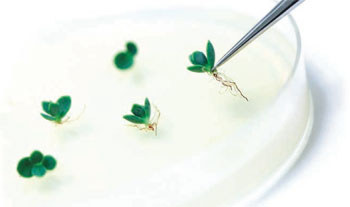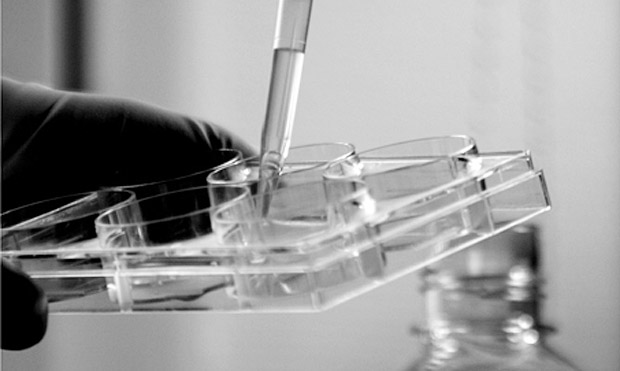- Open Academic Robot Kit — A common set of parts, specifications, and software to catalyse the design, construction, dissemination, and re-use of robots in an academic and research environment. (via Robohub)
- Amino: Desktop Bioengineering for Everyone (Indiegogo) — a counter-top sized biolab that enables anyone to grow living cells to create new and interesting things – like fragrances, flavours, materials, medicine, and more.
- Generous Interfaces for Digital Cultural Collections (Mitchell Whitelaw) — Decades of digitisation have made a wealth of digital cultural material available online. Yet search — the dominant interface to these collections — is incapable of representing this abundance. Search is ungenerous: it withholds information, and demands a query. This paper argues for a more generous alternative: rich, browsable interfaces that reveal the scale and complexity of digital heritage collections. (via Courtney Johnston)
- The Universal Design (Christine Dodrill) — there need to be five basic primitives in your application: State – What is true now? What was true? What happened in the past? What is the persistent view of the world? Events – What is being changed? How will it be routed? Policy – Can a given event be promoted into a series of actions? Actions – What is the outcome of the policy? Mechanism – How should an event be taken in and an action put out? […] All you need is a command queue feeding into a thread pool which feeds out into a transaction queue which modifies state. And with that you can explain everything from VMWare to Google.
"DIYbio" entries


Four short links: 19 October 2015
Academic Robot Kit, Countertop Biolab, Generous Interfaces, and Universal Design

A commitment to biotech, in action
"I eat, breathe, live biotech,” says Ryan Bethencourt. “It’s really all I do at this point.”
This story is part of our ongoing exploration of synthetic biology and the DIYbio movement. Learn more by downloading a free edition of BioCoder.
Ryan Bethencourt seized his opportunity back in 2008. That made him an outlier: most people, after all, were seizing pink slips, not opportunities. But while the Great Recession wiped out billions in home equity and blew up companies by the score, it also freed up plenty of hard assets. In simple terms, you could buy a lot of expensive stuff for a song. And that’s just what Bethencourt and his pal, molecular biologist and fellow DIYbio enthusiast, John Schloendorn, did.
“The financial crisis resulted in the liquidation of a big chunk of the biotechnology sector,” says Bethencourt, a molecular geneticist-cum-biotech entrepreneur who was working as a business development director for a clinical research organization at the time. “So we bought up a lot of research-grade equipment. We felt we couldn’t afford to pass it up.” Read more…

Synthetic biology on the cusp
Oliver Medvedik on the grassroots future of biohacking and the problems with government overreach.
 Whither thou goest, synthetic biology? First, let’s put aside the dystopian scenarios of nasty modified viruses escaping from the fermentor Junior has jury-rigged in his bedroom lab. Designing virulent microbes is well beyond the expertise and budgets of homegrown biocoders.
Whither thou goest, synthetic biology? First, let’s put aside the dystopian scenarios of nasty modified viruses escaping from the fermentor Junior has jury-rigged in his bedroom lab. Designing virulent microbes is well beyond the expertise and budgets of homegrown biocoders.
“Moreover, it’s extremely difficult to ‘improve’ on the lethality of nature,” says Oliver Medvedik, a visiting assistant professor at The Cooper Union for the Advancement of Science and Art and the assistant director of the Maurice Kanbar Center for Biomedical Engineering. “The pathogens that already exist are more legitimate cause for worry.” Read more…

DIYbio and the hacking metaphor
Definitive answers require further testing
The following is from the second issue of BioCoder, the quarterly newsletter for synthetic biologists, DIY biologists, neurobiologists, and more. Download your free copy today.
Within DIYbio, one cannot escape the hacking metaphor. The metaphor is ubiquitous and, to a point, useful. The term connotes both productive play with an existing technology aimed at improvement and, at the same time, play with sinister undertones. In this sense, hacking captures the promise and pitfalls of the dual uses any mature technology might be put to, whether that technology is as dramatic as nuclear power/weapons or as mundane as a free/premium software license. But every metaphor has its limits. Pushed too far, metaphors break down, and instead of illuminating, they obscure. Which brings me to ask: how far can the hacking metaphor be pushed within DIYbio—at least the part of DIYbio falling in line with synthetic biology?
